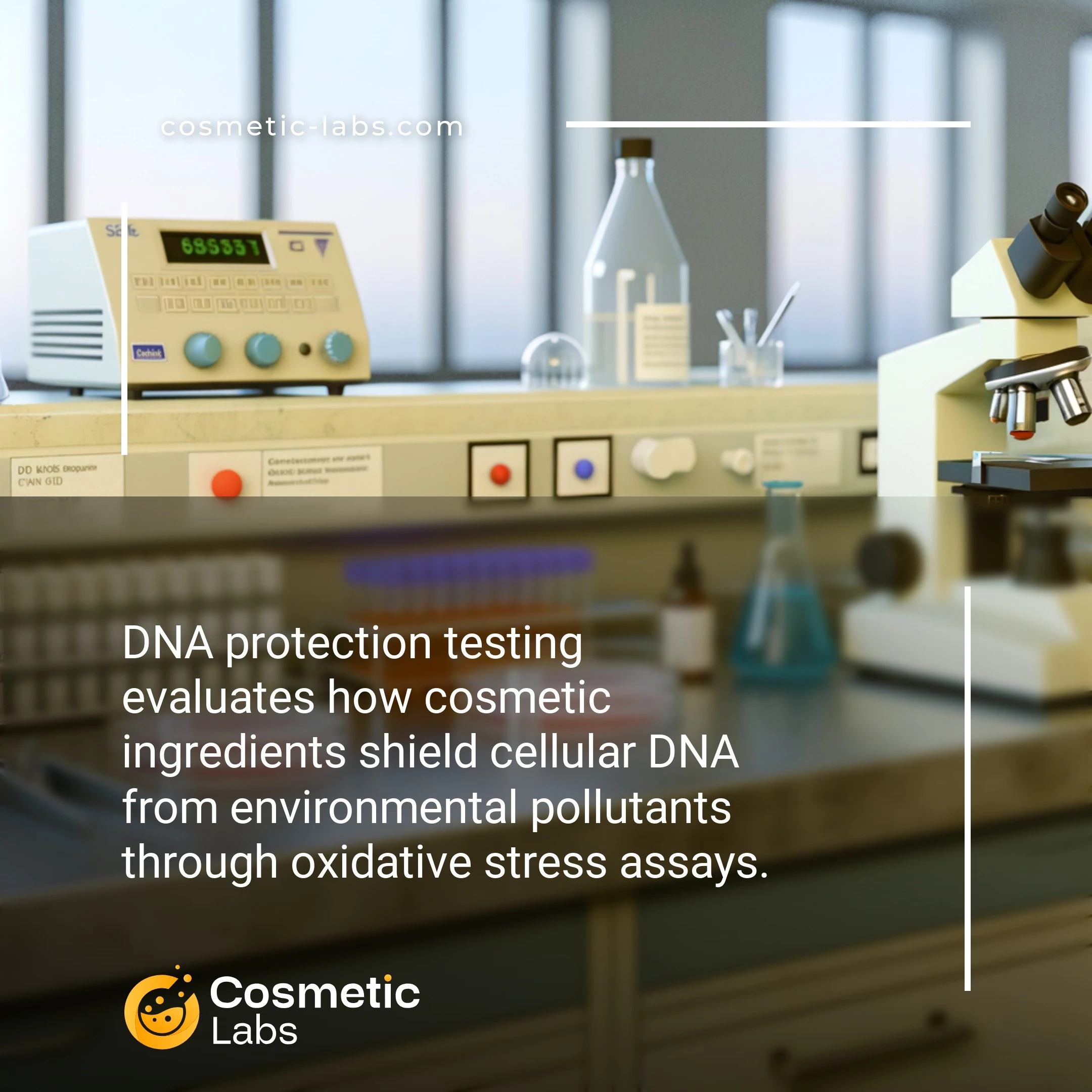DNA Protection Testing Services for Anti-Pollution Cosmetics

What is DNA protection mechanisms?
DNA protection mechanisms testing services evaluate how cosmetic ingredients shield cellular DNA from environmental pollutants like particulate matter and ozone. These assays measure DNA damage markers, oxidative stress levels, and repair pathway activation in skin cell cultures exposed to urban pollutants. Labs use comet assays and 8-oxo-dG quantification to demonstrate your product’s ability to prevent genetic damage, providing scientific backing for anti-pollution claims that resonate with consumers in polluted urban environments.
Why do you need this service?
Beauty brands partner with our labs to validate anti-pollution skincare claims through cellular DNA damage assays that measure protection against urban pollutants like PM2.5 and ozone. These tests deliver quantifiable efficacy data showing how formulations shield skin cells from environmental oxidative stress, supporting marketing claims and regulatory submissions for detox serums, protective moisturizers, and barrier repair products.
Who provides DNA protection mechanisms services?
All cosmetic labs providing DNA protection mechanisms services
There is no company providing these services at the moment.
DNA Protection Testing for Anti-Pollution Cosmetics
DNA protection testing validates how well your cosmetic formulations shield skin cells from environmental pollutants and oxidative damage. Labs on our platform use advanced cellular assays to measure DNA integrity and repair mechanisms, giving you concrete data to support anti-pollution product claims.
Cellular DNA Damage Assessment
Labs measure DNA strand breaks and oxidative lesions using comet assays and fluorescent markers. These tests expose skin cells to pollutants like PM2.5, ozone, and heavy metals, then quantify the protective effects of your ingredients. Results show percentage reduction in DNA damage compared to untreated controls.
Testing protocols include:
- Single-cell gel electrophoresis for strand break analysis
- 8-oxoguanine detection for oxidative damage markers
- Cell viability assays to confirm ingredient safety
DNA Repair Mechanism Studies
Your formulations can boost cellular repair pathways that fix pollution-induced DNA damage. Labs test how ingredients activate DNA repair enzymes like photolyase and endonuclease. They measure repair kinetics over 24-48 hours to show recovery rates.
Key measurements include enzyme activity levels, repair protein expression, and cellular recovery timeframes. This data helps you position products as active defenders against urban pollution damage, not just passive barriers.
Connect with specialized labs on our platform to validate your anti-pollution claims with robust DNA protection data that regulatory bodies and consumers trust.
Practical Applications of DNA Protection Testing for Pollutant Defense
Cosmetic labs deploy DNA protection mechanisms testing for pollutant protection to validate how formulations shield cellular genetic material from environmental damage and oxidative stress.
Anti-Pollution Skincare Product Development
Labs evaluate protective ingredients like antioxidant complexes, barrier-strengthening peptides, and chelating agents through DNA comet assays and 8-oxo-dG quantification. These tests measure how well formulations prevent DNA strand breaks caused by particulate matter, heavy metals, and UV-induced free radicals.
Product developers use this data to optimize concentrations of protective actives and validate claims about cellular defense capabilities. Testing protocols typically run 24-72 hours using cultured keratinocytes exposed to pollution simulants like diesel exhaust particles or ozone.
| DNA Damage Marker | Pollution Source | Test Duration | Protection Threshold |
|---|---|---|---|
| Comet tail length | PM2.5 particles | 24 hours | >30% reduction |
| 8-oxo-dG levels | UV + ozone | 48 hours | >40% reduction |
| Micronuclei formation | Heavy metals | 72 hours | >25% reduction |
Regulatory Compliance and Safety Assessment
Labs conduct genotoxicity screening using DNA protection assays to meet safety requirements for cosmetic ingredients and finished products. These tests identify potential mutagens and assess cytotoxic effects before market launch.
Regulatory packages include Ames testing, chromosome aberration analysis, and DNA repair enzyme activity measurements. Results support safety dossiers for international markets and help brands demonstrate due diligence in ingredient safety evaluation.
Ready to validate your formulation’s DNA protective capabilities? Connect with specialized cosmetic labs on our platform to discuss your testing requirements and timeline.
